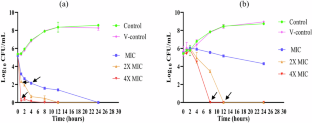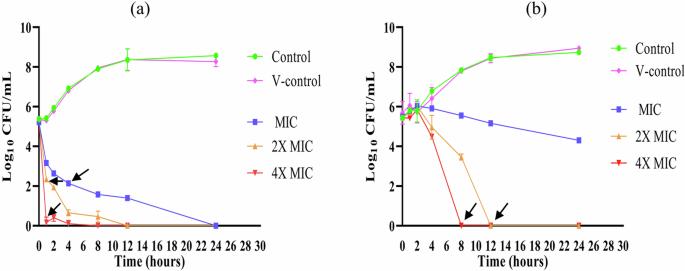Repurposing of dibucaine and niflumic acid as antimicrobial agents in combination with antibiotics against Staphylococcus aureus
IF 2.1
4区 医学
Q3 BIOTECHNOLOGY & APPLIED MICROBIOLOGY
引用次数: 0
Abstract
The versatile human commensal bacteria and pathogen Staphylococcus aureus cause several community and hospital-acquired illnesses associated with significant morbidity and death. Antibiotic therapy for S. aureus infections has grown increasingly difficult as the organism has developed a wide spectrum of antibiotic resistance mechanisms. This situation emphasizes the significance of developing and advocating new antimicrobials for preventative and therapeutic measures. Our study aimed to identify and evaluate new therapeutic options against S. aureus. We investigated the efficacy of two drugs, dibucaine, and niflumic acid, as potential adjuvant for anti-staphylococcal therapeutics. Dibucaine and niflumic acid found to have bactericidal activity against S. aureus. These drugs acted synergistically with antibiotics reducing the required dose of antibiotics up to 4 times. In combination with antibiotics, they were effectively and synergistically inhibited the formation of biofilms of S. aureus. The best synergistic partner of dibucaine was with kanamycin and tetracycline, whereas niflumic acid was with streptomycin and ampicillin. Both the drugs showed significant efflux inhibition in the bacteria. Moreover, the drugs are found to be safe at synergistic doses. Our findings suggest that dibucaine and niflumic acid could be potential adjuvant with antibiotics for the treatment of S. aureus infections. Their ability to significantly enhance the efficacy of antibiotics highlights their potential clinical significance as adjunct therapies.


将地布卡因和硝氟酸重新用作抗菌剂,与抗生素联合抗击金黄色葡萄球菌。
金黄色葡萄球菌(Staphylococcus aureus)是一种多变的人类共生细菌和病原体,可引起多种社区和医院获得性疾病,并导致严重的发病和死亡。由于金黄色葡萄球菌产生了广泛的抗生素耐药机制,抗生素治疗金黄色葡萄球菌感染变得越来越困难。在这种情况下,开发和推广新的抗菌药物作为预防和治疗措施就显得尤为重要。我们的研究旨在确定和评估针对金黄色葡萄球菌的新治疗方案。我们研究了地布卡因和硝氟酸这两种药物作为抗金黄色葡萄球菌疗法潜在辅助药物的疗效。结果发现,地布卡因和硝氟酸对金黄色葡萄球菌具有杀菌活性。这些药物与抗生素协同作用,可将所需抗生素的剂量减少 4 倍。在与抗生素联合使用时,它们能有效地协同抑制金黄色葡萄球菌生物膜的形成。地布卡因的最佳协同作用伙伴是卡那霉素和四环素,而硝氟酸的最佳协同作用伙伴是链霉素和氨苄西林。这两种药物对细菌的外流都有明显的抑制作用。此外,这两种药物在协同剂量下是安全的。我们的研究结果表明,地布卡因和硝氟米酸有可能成为治疗金黄色葡萄球菌感染的抗生素辅助药物。这两种药物能够明显增强抗生素的疗效,突出了它们作为辅助疗法的潜在临床意义。
本文章由计算机程序翻译,如有差异,请以英文原文为准。
求助全文
约1分钟内获得全文
求助全文
来源期刊

Journal of Antibiotics
医学-免疫学
CiteScore
6.60
自引率
3.00%
发文量
87
审稿时长
1 months
期刊介绍:
The Journal of Antibiotics seeks to promote research on antibiotics and related types of biologically active substances and publishes Articles, Review Articles, Brief Communication, Correspondence and other specially commissioned reports. The Journal of Antibiotics accepts papers on biochemical, chemical, microbiological and pharmacological studies. However, studies regarding human therapy do not fall under the journal’s scope. Contributions regarding recently discovered antibiotics and biologically active microbial products are particularly encouraged. Topics of particular interest within the journal''s scope include, but are not limited to, those listed below:
Discovery of new antibiotics and related types of biologically active substances
Production, isolation, characterization, structural elucidation, chemical synthesis and derivatization, biological activities, mechanisms of action, and structure-activity relationships of antibiotics and related types of biologically active substances
Biosynthesis, bioconversion, taxonomy and genetic studies on producing microorganisms, as well as improvement of production of antibiotics and related types of biologically active substances
Novel physical, chemical, biochemical, microbiological or pharmacological methods for detection, assay, determination, structural elucidation and evaluation of antibiotics and related types of biologically active substances
Newly found properties, mechanisms of action and resistance-development of antibiotics and related types of biologically active substances.
 求助内容:
求助内容: 应助结果提醒方式:
应助结果提醒方式:


